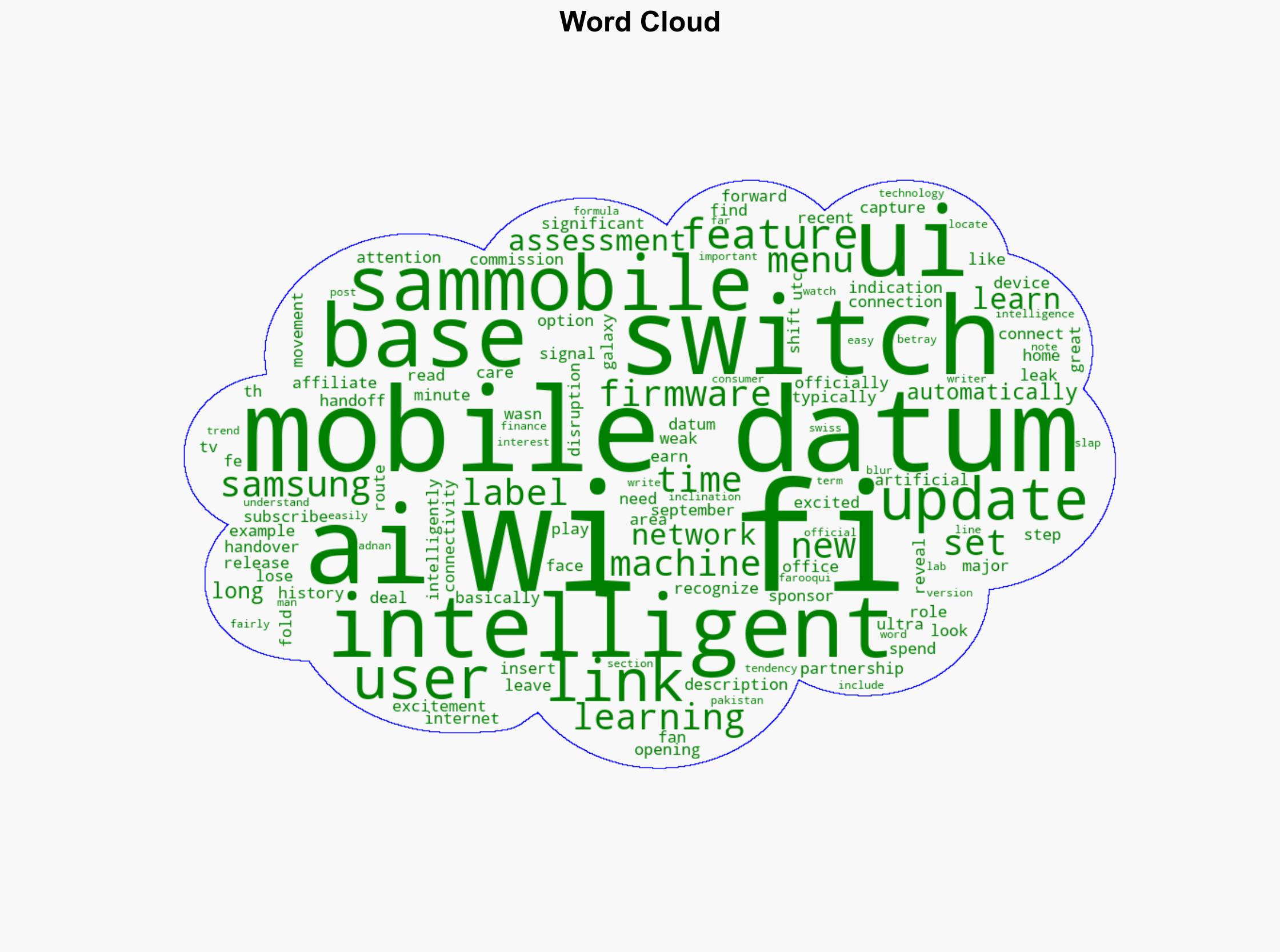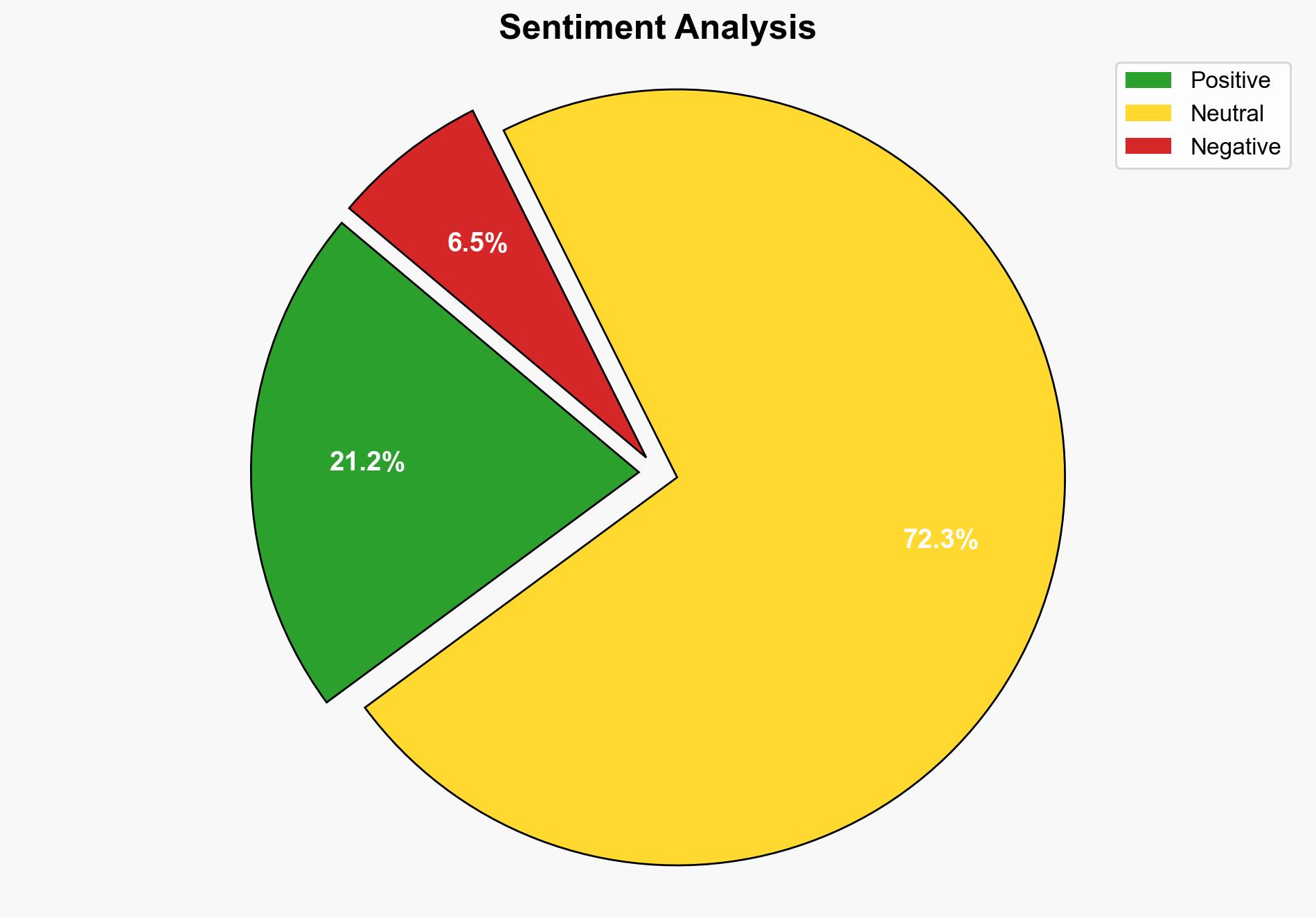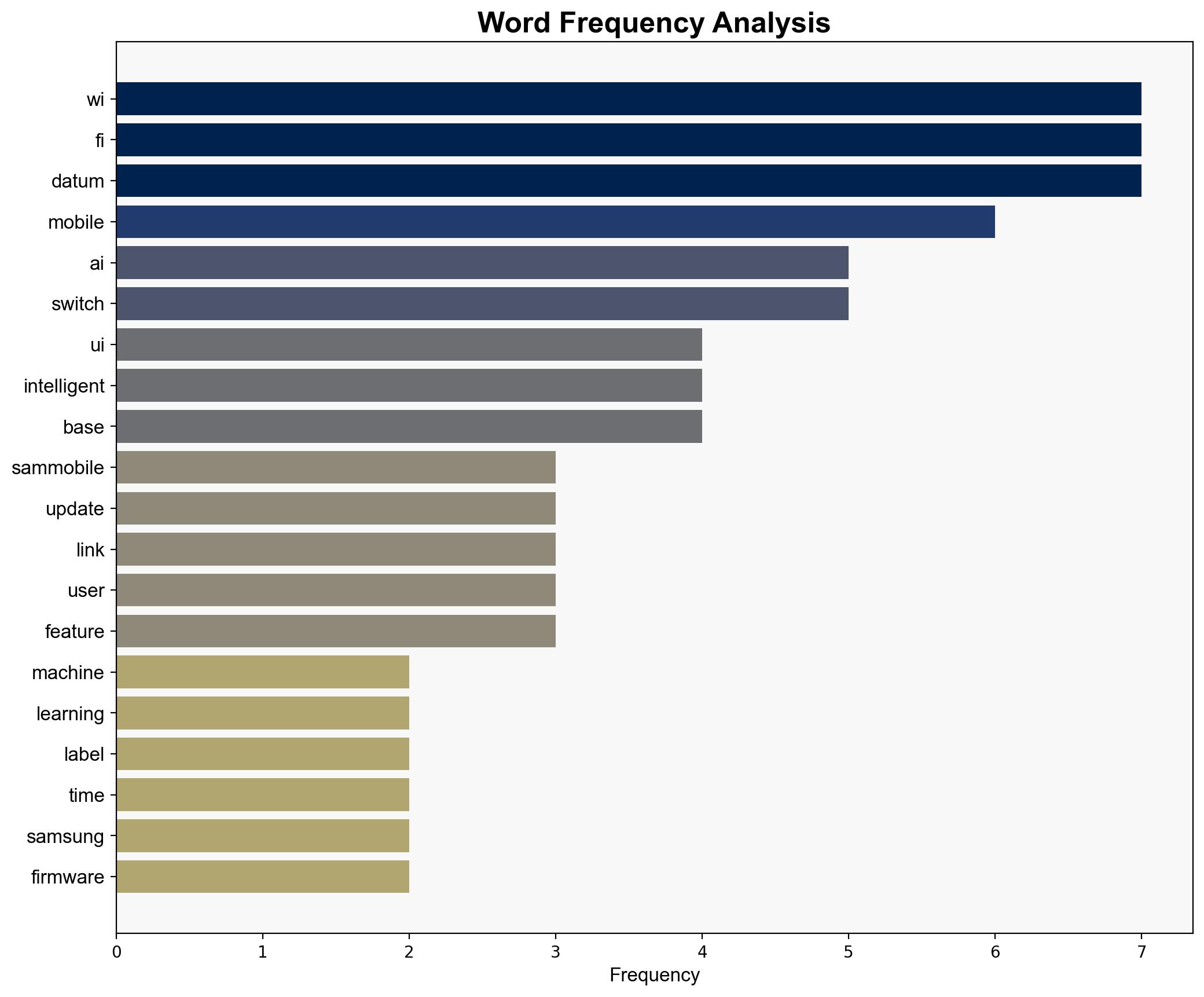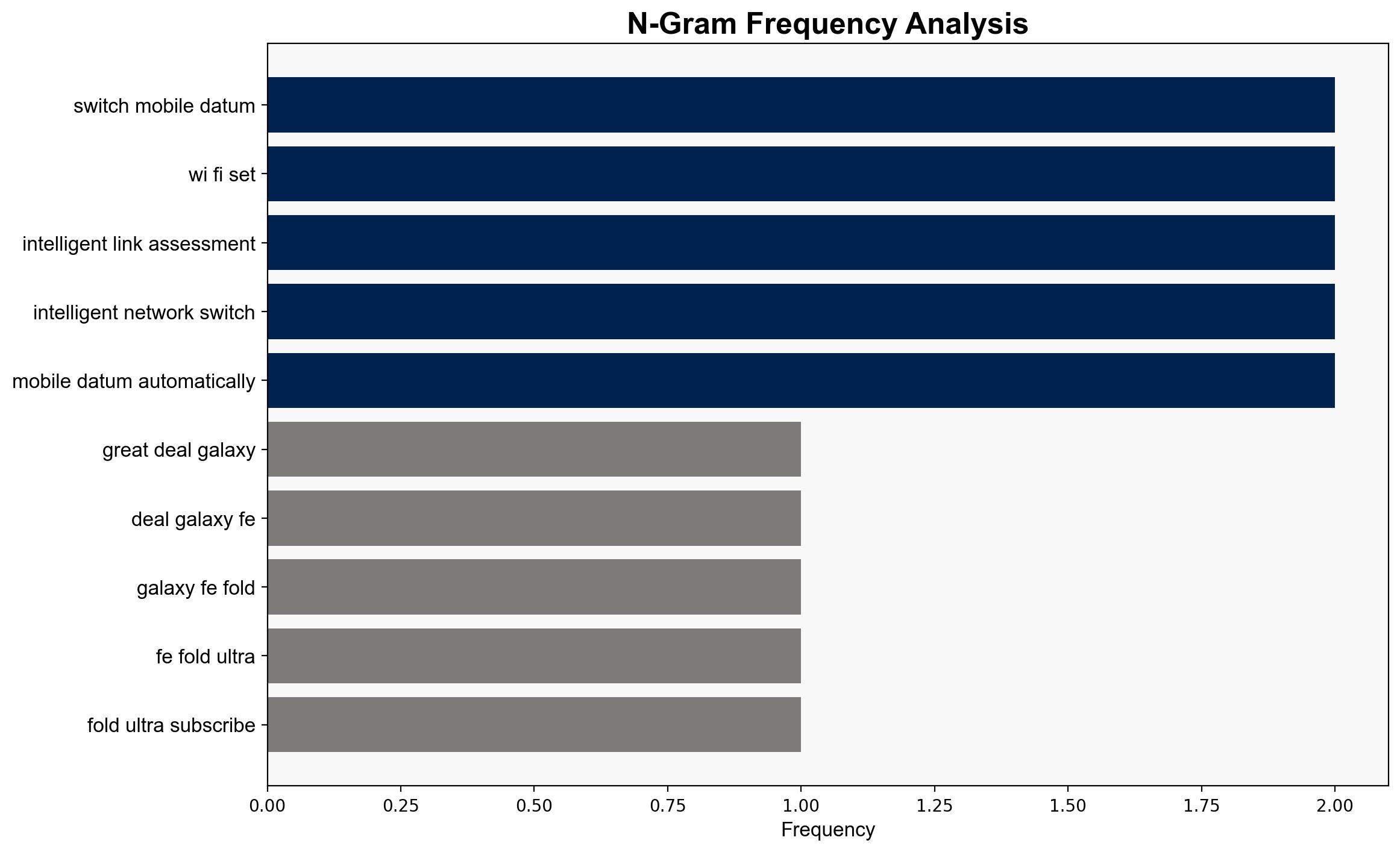One UI 85 puts AI in charge of switching between Wi-Fi and mobile data – SamMobile
Published on: 2025-09-28
Intelligence Report: One UI 85 puts AI in charge of switching between Wi-Fi and mobile data – SamMobile
1. BLUF (Bottom Line Up Front)
The introduction of AI-driven features in Samsung’s One UI 85 for managing Wi-Fi and mobile data transitions represents a strategic move towards enhancing user connectivity and experience. The most supported hypothesis suggests that this development primarily aims to improve user convenience and network efficiency. Confidence in this assessment is moderate, given the potential for underlying commercial strategies. Recommended action includes monitoring user feedback and technological performance to assess the feature’s impact on consumer satisfaction and network optimization.
2. Competing Hypotheses
1. **Hypothesis A**: Samsung’s AI-driven feature is primarily designed to enhance user experience by ensuring seamless connectivity, thereby increasing customer satisfaction and loyalty.
2. **Hypothesis B**: The feature is a strategic move to collect more user data, which can be leveraged for targeted marketing and partnerships, potentially prioritizing commercial interests over user privacy.
Using ACH 2.0, Hypothesis A is better supported by the evidence, as the description emphasizes user convenience and connectivity improvements. However, the potential for data collection as a secondary motive cannot be dismissed.
3. Key Assumptions and Red Flags
– **Assumptions**: It is assumed that AI implementation will function as intended without significant technical issues. Another assumption is that users will perceive this feature positively and not as an intrusion on privacy.
– **Red Flags**: The lack of detailed information on data privacy measures and user consent could indicate potential privacy concerns. The feature’s placement in the “lab” section suggests it may still be experimental.
4. Implications and Strategic Risks
The integration of AI in connectivity management could set a precedent for future AI applications in mobile technology, influencing industry standards. However, if privacy concerns arise, it could lead to regulatory scrutiny and damage Samsung’s reputation. The feature’s success or failure could impact Samsung’s competitive position in the smartphone market.
5. Recommendations and Outlook
- Monitor user feedback and technical performance to evaluate the feature’s effectiveness and acceptance.
- Ensure transparency regarding data usage and privacy to mitigate potential backlash.
- Scenario Projections:
- Best Case: The feature significantly enhances user experience, leading to increased market share and setting a new industry standard.
- Worst Case: Privacy concerns lead to regulatory challenges and loss of consumer trust.
- Most Likely: The feature is moderately successful, with mixed user feedback and gradual improvements over time.
6. Key Individuals and Entities
Adnan Farooqui, a long-term writer at SamMobile, provides insights into the feature’s potential impact and user reception.
7. Thematic Tags
technology innovation, consumer electronics, data privacy, AI integration





